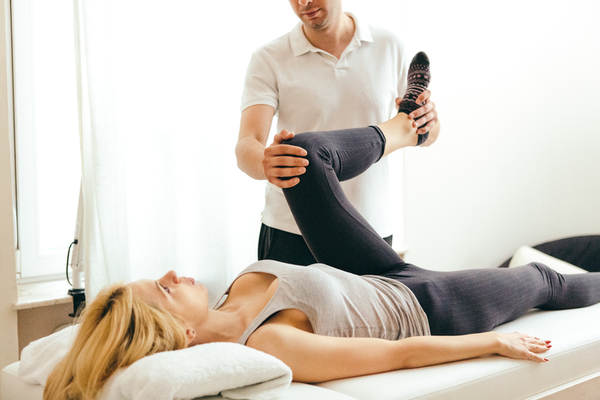
Sports therapy is a form of physical therapy which focuses on providing treatment for athletes and active individuals. Its purpose is to help the individual recover from sports-related injuries, improve performance, prevent future injury, and optimize overall wellness.
Sports therapists use a variety of therapies and techniques such as sports massage, strength training, flexibility and balance exercises, joint mobilization, trigger point therapy, therapeutic modalities (e.g., ultrasound), aquatic therapy, kinesiotaping, biomechanical analysis and corrective exercises to restore joint mobility and tissue integrity. They also develop rehabilitation programs that focus on improving coordination, strength, power and endurance while reducing the risk of further injury.
The primary goal of sports therapy is to restore optimal function of the individual in their sport or activity. It can also involve helping athletes in developing mental strategies to compete at a higher level or helping them cope with the mental stresses associated with high competition levels. In addition to treating musculoskeletal injuries directly related to sport or physical activity, sports therapists may also treat conditions such as overuse injuries or chronic pain secondary to muscular imbalances or poor posture.
For athletes participating in high-level competitions or activities requiring repetitive motion patterns where it may be difficult to prevent injury caused by overtraining and lack of proper recovery techniques between bouts of exercise (such as running marathons), sports therapists can assist in creating effective training programs that will reduce the risk for injury due to poor biomechanics or an excessive amount of repetitive stress placed on certain joints or muscles. Sports therapists can also provide advice on nutrition, hydration practices and rest & recovery strategies that are specific to the athlete’s needs so they can remain healthy throughout their season.
Sports massage is an important component of a comprehensive sports therapy program, as it can be used to supplement other forms of treatment and therapy. Massage helps improve circulation, reduce muscle tension, and promote healing of soft tissue injuries. It also increases flexibility and range of motion, allowing for optimal performance when performing physical activities.
Sports massage can help in the prevention and recovery from a wide variety of musculoskeletal conditions including contusions, sprains, strains, tendonitis, bursitis, shin splints, sciatica and back pain. By improving circulation and increasing blood flow to the injured area it also helps reduce inflammation and swelling. Additionally, massage can help break down scar tissue that can accumulate over time due to repetitive stress on certain muscles or joints. This helps restore normal mobility which will in turn promote better performance outcomes.
Massage is often used in combination with additional therapies such as joint mobilization or manual therapy techniques to further reduce pain and stiffness associated with musculoskeletal injuries. Moreover, therapeutic modalities such as ultrasound or laser may be used prior to a massage session in order to increase the effectiveness of the massage by warming up soft tissues before they are worked upon. In addition to its benefits for treating existing conditions, sports massage can also be used as part of a preventive program designed to reduce future injury risk by identifying muscle imbalances or postural problems that put an individual at risk for overtraining-related injuries or chronic pain issues secondary to poor biomechanics.
Overall sports massage is an effective tool for helping athletes reach their peak performance while simultaneously reducing their risk for future injury by addressing muscular imbalances or biomechanical issues. It is often used in conjunction with other treatments and therapies such as strength training exercises or therapeutic modalities like ultrasound and laser so that athletes can achieve optimal results while recovering from injuries quickly and efficiently.
